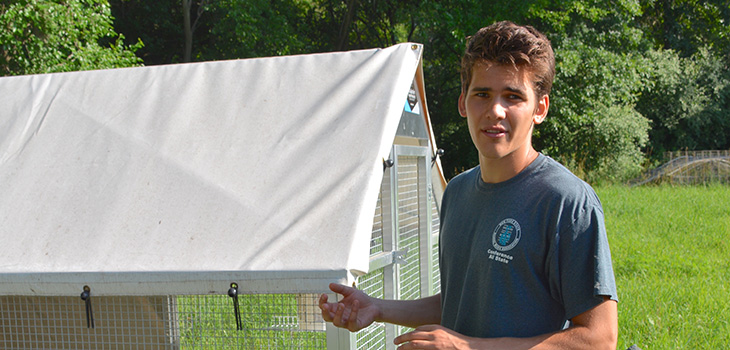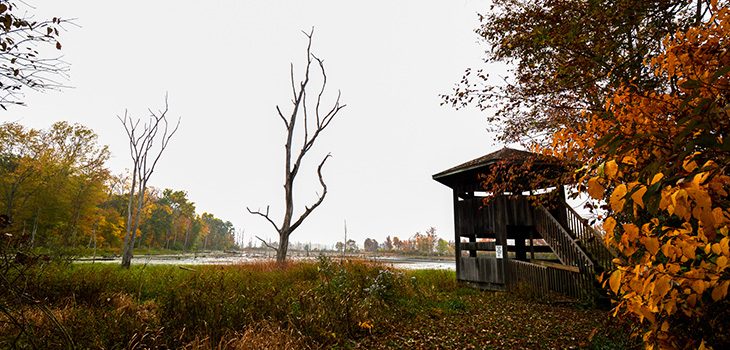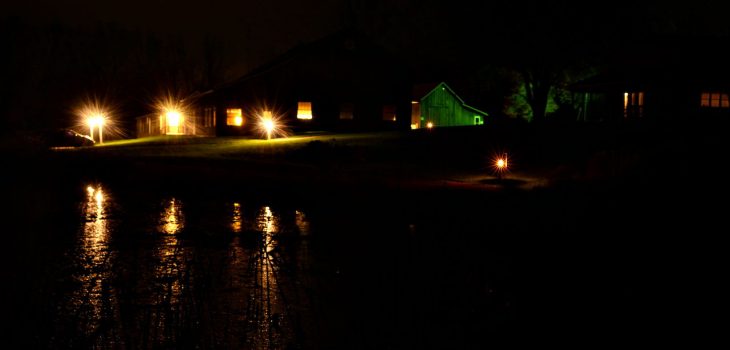Bird Banding and Point Counts
Hickory Scholars:
Ruby Meyer
Goshen College ’23
Majors: Biochemistry and Chemistry
Mira Yoder
Goshen College ’24
Majors: Biology and Computer Science
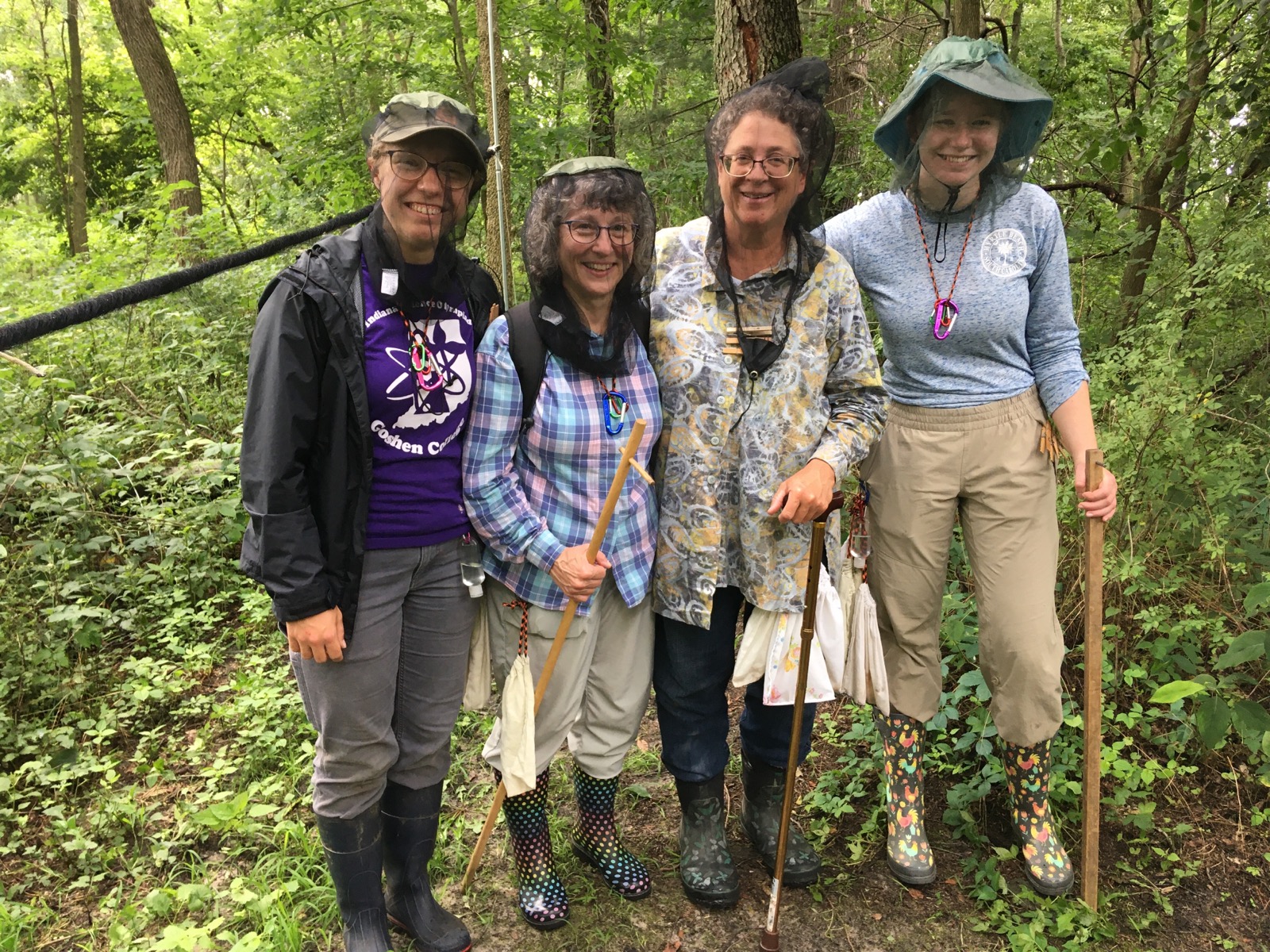
WHAT IS THE RESEARCH?
Both Mira and Ruby worked with Merry Lea staff and volunteers to band songbirds and near passerines (a group of birds that includes woodpeckers) to contribute to the continent-wide project, Monitoring Avian Productivity and Survivorship (MAPS). This project collects and analyzes data from bird banding stations across North America to understand how habitat, weather, and climate change impact bird populations and to assess patterns in birds’ ranges and survivorship.
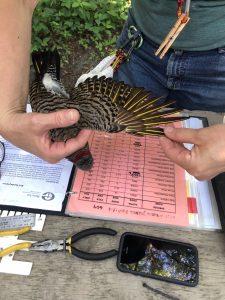 Bird banding involves catching birds and putting a metal band, like a bracelet, around the bird’s lower leg. Each band has a unique number to provide a way of identifying each individual bird. As part of MAPS project, Mira and Ruby set up and checked nets for seven days throughout the summer. When a bird was caught safely in a net, they recorded the species, sex, age, weight, wing length and other identifying markers. With assistance from Carol Good-Elliott, environmental educator and bird banding project leader, they either banded the bird or recorded its existing band number. This data was then inputted into the MAPS database, which help indicate any trends happening across time and locations.
Bird banding involves catching birds and putting a metal band, like a bracelet, around the bird’s lower leg. Each band has a unique number to provide a way of identifying each individual bird. As part of MAPS project, Mira and Ruby set up and checked nets for seven days throughout the summer. When a bird was caught safely in a net, they recorded the species, sex, age, weight, wing length and other identifying markers. With assistance from Carol Good-Elliott, environmental educator and bird banding project leader, they either banded the bird or recorded its existing band number. This data was then inputted into the MAPS database, which help indicate any trends happening across time and locations.
Mira also conducted bird point counts at 34 sites across Merry Lea, surveying each site three times throughout the summer. Mira visited the sites between 6 and 10 a.m., taking the temperature and windspeed, and recorded all the bird species she saw and heard. This research is meant to build upon a similar study done in 2004 by a Goshen College student.
HOW WILL THIS RESEARCH INFORM OR IMPACT MERRY LEA?
Both projects may indicate how habitat management, including Merry Lea’s restoration efforts, affects bird populations.
The MAPS project is “a good indicator of how stable Merry Lea’s habitats are,” said Ruby, whether Merry Lea supports a wide variety of birds and if they return each year to breed. Additionally, Mira’s point counts not only further inform Merry Lea’s diversity of birds, but by comparing the results with the 2004 data, Mira can assess whether Merry Lea’s changing habitats – from restoration projects and succession – have affected bird populations over time.
WHAT ARE SOME OF THE TAKEAWAYS FROM THESE PROJECTS?
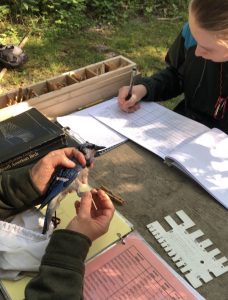 “Bird banding is another way to interact with nature. It’s fun to know what’s around
“Bird banding is another way to interact with nature. It’s fun to know what’s around
and share that knowledge with other people…Working with other people [is a big takeaway.] It’s always enjoyable because the volunteers that help are fun people. I’ve also worked to adjust to other peoples’ needs, practicing decision-making with other people: dividing tasks and figuring out who is best suited to do what aspect of banding and cleanup.” – Ruby
“It’s really important to do this research. Birds are affected so much by humans: how we change the environments they live in, climate change, what we put into their food sources, like herbicides. I enjoy learning how we can better protect them, but I personally find them so amazing. They can fly! …I really like [avian research] and hope to continue to develop these skills in the future.” – Mira

